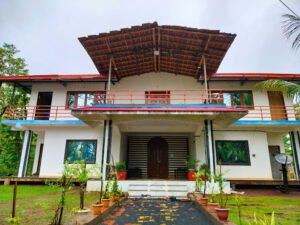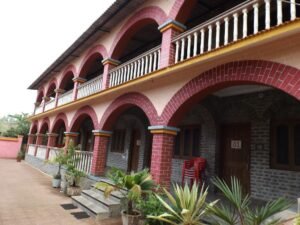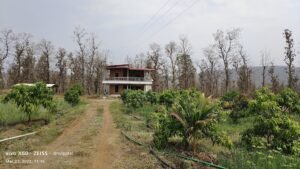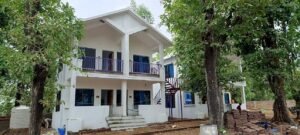Gujarat is not only famous for its vibrant landscape and tribal cultures but also stands as a spiritual beacon – home to some of India’s most revered temples. From ancient Jyotirlingas to Shakti Peeths, Jain hillside complexes, and architectural marvels, the temples of Gujarat offer a blend of devotion, history, and cultural depth. Here you’ll find 10 best temple tourism places in Gujarat, with rich architecture, peaceful stay options which will be very helpful to you!
Table of Contents
1. Somnath Temple (Prabhas Patan, Veraval)
Overview
One of the 12 Jyotirlingas, Somnath is considered the first and most sacred of the Shiva shrines. Set on a cliff overlooking the Arabian Sea, it symbolizes resilience – having been destroyed and rebuilt multiple times across centuries. This will always be first choice in list of best temple tourism places in Gujarat.
What Makes It Special
- Spiritual draw: Shiva devotees perform the Shahi Snaan and aarti in the evening.
- Architecture: Reconstructed in 1951 in Chalukya style; richly decorated with sculptured exteriors.
- Visitor stats: It draws millions annually, and Gujarat is investing ₹200 crore in upgrading pilgrim towns including Somnath.
Planning Details
- Best time: October–March; avoid peak monsoon.
- Access: Well connected by road from Junagadh and Diu; nearest rail at Veraval.
- Nearby attractions: Bhalka Tirtha (site of Krishna’s legend), Triveni Ghat.
2. Dwarkadhish Temple (Dwarka)
Overview
Dedicated to Lord Krishna, this coastal temple is a core stop on the Char Dham pilgrimage. The impressive five-story sanctuary, supported by 72 carved pillars, is known as Jagat Mandir or Jagat Dwarkadhish.
What Makes It Special
- Char Dham circuit: One of only four sacred pilgrimage sites in India.
- Cultural richness: Daily rituals, evening aartis, riverfront steps, and nearby Krishna Janmashtami celebrations.
Planning Details
- Best time: November–February for pleasant weather.
- Access: Road and rail to Dwarka; Jamnagar airport ~130 km.
- Nearby sites: Rukmini Temple, Beyt Dwarka, Bet Dwarka beach.
3. Nageshwar Jyotirlinga (Near Dwarka)
Overview
One of the twelve Jyotirlingas of Lord Shiva, situated close to Dwarka and Brahma Kund. Known for a 25-meter tall Shiva statue, it stands as a powerful spiritual anchor.
What Makes It Special
- Legend: Said to protect devotees from poison and evil.
- Pilgrimage tradition: Up next to Dwarkadhish in Dassera and Janmashtami pilgrimage upwards.
Planning Details
- Best time: October–February.
- Access: Day‑trip from Dwarka; easy visit by road.
- Nearby: Temple extension circuits and seaside promenades.
4. Ambaji Temple (Banaskantha)
Overview
A revered Shakti Peetha, Ambaji sits atop Champaner‑Aravalli hills. The primary deity is the goddess Amba, worshiped via a sacred yantra, not a statue. It’s one of 51 recognized Shakti shrines in India.
What Makes It Special
- Mass pilgrim traffic during Navratri and Bhadarvi Poonam fairs.
- Sacred architecture: Built into the hillside, invoking both spiritual and scenic appeal.
Planning Details
- Best season: September–February with festivals.
- Access: Road from Abu Road railway (35 km), Sardar Vallabhbhai Patel airport (200 km).
- Nearby: Mount Abu (Rajasthan), Champaner‑Pavagadh.
5. Mahakali Mata Temple, Pavagadh (Champaner‑Pavagadh Archaeological Park)
Overview
Sitting 762 m above sea level within the UNESCO site, this temple atop Pavagadh Hill is considered one of the Shakti Peethas. It’s accessible via ropeway or a scenic 5 km trail through ancient ruins and forest.
What Makes It Special
- Spiritual + historical synergy: Combines Jain, Hindu, and Islamic heritage across centuries.
- Festival draw: Massive pilgrim numbers during Navratri and fair season.
Planning Details
- Best time: October–March.
- Access: Ropeway from Champaner; trekking trail through heritage forest.
- Nearby: Champaner fort, ancient mosques and stepwells.
6. Shri Shatrunjaya Jain Temples (Palitana, Bhavnagar)
Overview
Home to over 800 marble-carved Jain temples, Palitana on Shatrunjaya Hill is considered the holiest pilgrimage circuit in Jainism. Pilgrims must climb nearly 3,800 steps or ride a sling‑chair to reach the top shrine of Rishabhanatha.
What Makes It Special
- World’s largest temple complex; architectural finesse across centuries.
- Deep pilgrimage ethos: Climbing is a meditative, ascetic act symbolizing spiritual ascent.
Planning Details
- Best season: November–February to avoid heat and humidity.
- Access: Bhavnagar airport/train station; footpath or ropeway to summit.
- Nearby: Harije hot springs, Bhavnagar city temples.
7. Sun Temple, Modhera (Mehsana District)
Overview
Built in the 11th century under King Bhimdev I of the Solanki dynasty, this temple is aligned to let the first rays of the rising sun fall directly on the sanctum during equinoxes.
What Makes It Special
- Maru-Gurjara architecture with exquisitely-carved sabhamandapa, sunken stepwell (Surya Kund), and dance festival stage.
- The annual Modhera Dance Festival (January) attracts artists globally.
Planning Details
- Best time: October–March; evening light shows on certain days.
- Access: 100 km from Ahmedabad, nearest rail at Mehsana.
- Nearby: Sun Temple light show, step-up restaurants.
8. Bala Hanuman Temple (Jamnagar)
Overview
This Hanuman temple near Lakhota Lake is famed for establishing a continuous chant of “Shri Ram, Jai Ram, Jai Jai Ram” since 1964, holding a spot in the Guinness Book of World Records.
What Makes It Special
- Spiritual energy: Devotees experience serene atmosphere with unbroken kirtan rhythm.
- Community energy: Visiting Tuesdays and Saturdays draws vibrant gatherings.
Planning Details
- Best time: Year-round, especially early morning or evening darshan.
- Access: In Jamnagar city; Lakhota Fort & museum nearby.
9. Stambheshwar Mahadev Temple (Kavi Kamboi, Bharuch)
Overview
Known as the “disappearing temple”, this Shiva shrine submerges in the sea twice daily during high tide, only reappearing with the ebbing tide – revealing a four-foot Shivling in all its enigmatic glory.
What Makes It Special
- Tidal phenomenon: A rare architectural wonder intertwined with nature.
- Pilgrim curiosity: Visitors time their arrival to witness the emerging darshan.
Planning Details
- Best days: Shravan month, Amavasya, Shivratri, Purnima; timing announced via local source.
- Access: 75 km from Vadodara, 160 km from Ahmedabad. Simple lodging near temple complex.
10. Rukmini Temple & Bhalka Tirth (Dwarka / Veraval)
Overview
- Rukmini Temple: Dedicated to Krishna’s wife, Rukmini. Located in Dwarka with splendid architecture and richly carved pillars.
- Bhalka Tirtha: Near Veraval, believed to be where Lord Krishna was accidentally shot by hunter Jara, leading to his departure from earth. A solemn lakeside shrine honoring that memory.
What Makes Them Special
- Companion circuit: These sites offer complementary spiritual depth to Dwarka and Somnath pilgrimages.
- Serene vibe: Both are peaceful, less crowded than main shrines, and historically significant.
Planning Details
- Best timing: October–February.
- Access: Accessible by road from Dwarka (Rukmini) or Veraval (Bhalka). Often part of coastal temple tours.
State Initiatives & Visitor Benefits
- Gujarat’s govt is investing ₹200+ crore to modernize pilgrimage towns like Somnath, Dwarka, and Palitana – expect improved infrastructure, cleaner access, and better amenities.
- Temple tourism peaks during major festivals: Navratri, Janmashtami, Mahashivratri, and Bhadarvi Purnima, drawing millions annually.
- Strategic locations feature multi-modal connectivity: road, rail, and airports make pilgrim-friendly access possible to all major sites.
Visitor Checklist
| Category | Recommendation |
|---|---|
| Best Seasons | October–March for comfortable weather and festival experiences. |
| What to Carry | Comfortable footwear, headcover, refillable water bottle, light wool layer (for hills), modest clothing. |
| Accommodation | Govt guesthouses, ashrams, heritage hotels, and local homestays for immersive stays. |
| Local Transport | Auto or shared taxis near temple complexes; state-run buses in hubs like Dwarka and Veraval. |
| Guided Access | Use temple trusts, local guides, or VanGhar-listed homestays offering spiritual retreats or heritage walks. |
| Etiquette | Remove footwear, maintain calm, carry no plastic near sanctums, follow dress norms, photography only where allowed. |
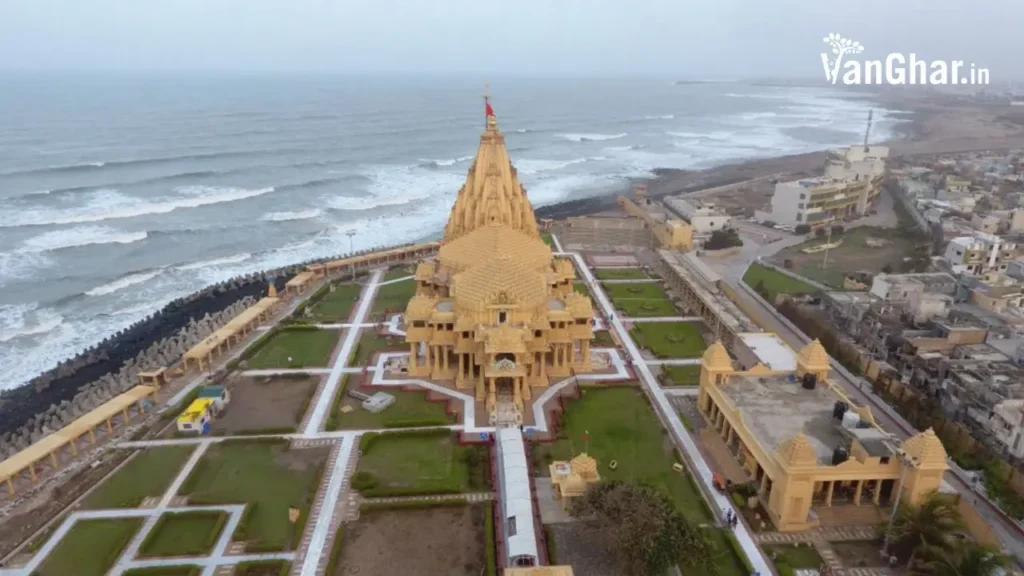
Final Thoughts
Gujarat’s temple landscape is not just spiritual – it’s a living canvas of ancient architecture, cultural festivals, and pilgrim traditions. From the enduring sanctity of Somnath and Dwarka to the mystical event at Stambheshwar and the ascent to Shatrunjaya’s marble-spired palace, these destinations offer more than divine energy – they tell the story of resilience, belief, and heritage across millennia.

